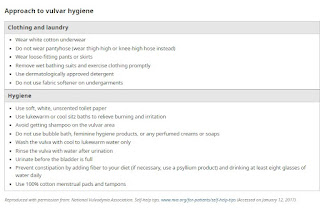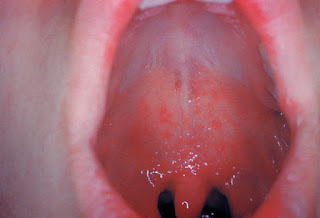Vulvodynia: Understanding Symptoms, Causes, Diagnosis, and Treatment
Vulvodynia is a chronic pain condition characterized by
discomfort, burning, or sensitivity in the vulva, the external genitalia of a
woman. It can significantly impact a person's quality of life and intimate
relationships. Vulvodynia can make it difficult or impossible to have sex, and it can also lead to other problems, such as urinary tract infections, anxiety, and depression.
This article provides a comprehensive overview of vulvodynia,
including its symptoms, causes, diagnosis, and treatment options.
I. Symptoms of Vulvodynia:
Vulvodynia presents itself differently in each individual, but common symptoms include:
The exact cause of vulvodynia remains unknown, but several factors may contribute to its development, including:
There is no single test that can diagnose vulvodynia. Instead, your doctor will likely do a physical exam and ask you about your symptoms. They may also order tests to rule out other possible causes of your pain, such as a yeast infection or sexually transmitted infection. Medical professionals typically follow a systematic approach, which may include:
Although there is no definitive cure for vulvodynia, various treatment options are available to manage symptoms and improve the patient's quality of life. These include:
Vulvodynia presents itself differently in each individual, but common symptoms include:
- Persistent pain or discomfort in the vulva area.
- Burning, stinging, or rawness in the genital region.
- Soreness or throbbing pain.
- Itching or irritation.
- Painful intercourse (dyspareunia).
- Pain during tampon insertion or prolonged sitting.
- Hypersensitivity to touch.
The exact cause of vulvodynia remains unknown, but several factors may contribute to its development, including:
- Nervous damage or irritation in the vulvar region.
- Abnormal response to inflammation.
- Genetic predisposition.
- Hormonal imbalances.
- Musculoskeletal disorders.
- Previous vaginal infections or injuries.
- Allergies or sensitivities to certain substances.
There is no single test that can diagnose vulvodynia. Instead, your doctor will likely do a physical exam and ask you about your symptoms. They may also order tests to rule out other possible causes of your pain, such as a yeast infection or sexually transmitted infection. Medical professionals typically follow a systematic approach, which may include:
- Detailed medical history and symptom assessment.
- Pelvic examination to rule out other conditions.
- Cultures or tests to rule out infections or skin disorders.
- A cotton swab test to assess pain response.
- Biopsy (rarely) to rule out other conditions.
Although there is no definitive cure for vulvodynia, various treatment options are available to manage symptoms and improve the patient's quality of life. These include:
- Topical medications: Local anesthetics, corticosteroids, or compounded creams to reduce pain and inflammation.
- Medications: Tricyclic antidepressants, anticonvulsants, or muscle relaxants to target nerve-related pain.
- Pelvic floor physical therapy: Exercises, biofeedback, or trigger point release to relax and strengthen pelvic muscles.
- Nerve blocks: Local anesthetics injected into affected nerves to provide temporary relief.
- Counseling or therapy: Cognitive-behavioral therapy (CBT) or other psychological interventions to manage pain and improve coping mechanisms.
- Lifestyle modifications: Avoiding potential irritants, wearing cotton underwear, practicing good hygiene, and using lubricants during intercourse.
- Alternative therapies: Acupuncture, relaxation techniques, or herbal remedies may provide relief for some individuals.
There are a number of support groups available for women with vulvodynia. These groups can provide you with information, support, and a sense of community. You can find a support group in your area by searching online or contacting your doctor.
Living with vulvodynia can be emotionally and psychologically challenging. It is essential for individuals to seek support and employ coping strategies, such as:
Living with vulvodynia can be emotionally and psychologically challenging. It is essential for individuals to seek support and employ coping strategies, such as:
- Joining support groups or seeking counseling.
- Communicating openly with partners and healthcare professionals.
- Exploring stress-reducing activities like yoga, meditation, or mindfulness.
- Educating oneself about the condition and seeking reliable information.
If you are experiencing vulvodynia, it is important to remember that you are not alone. There are many women who are affected by this condition, and there are effective treatments available. With the right treatment, you can live a normal, active life.
Vulvodynia is a complex and often misunderstood condition that affects many women worldwide. While it can be challenging to diagnose and treat, with proper medical care, support, and lifestyle modifications, individuals with vulvodynia can manage their symptoms and improve their overall well-being. If you suspect you may have vulvodynia, it is crucial to consult with a healthcare professional who can provide an accurate diagnosis and guide you towards appropriate treatment options






Comments
Post a Comment